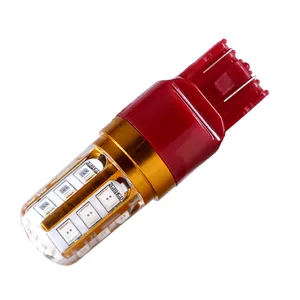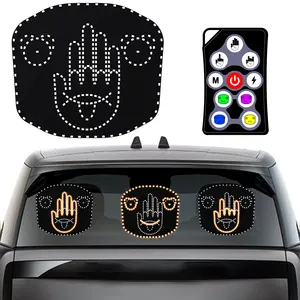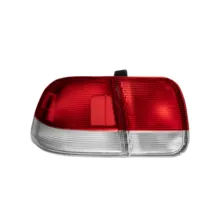A brake light is a crucial component of a vehicle's lighting system designed to enhance safety on the road. The brake light contributes to road safety by communicating drivers' intention to slow down or stop to those sharing the road.
Main Function of Brake Lights
Brake lights, an essential safety feature in vehicles, serve the crucial function of signaling when a car is slowing down or coming to a stop. Typically mounted at the rear of the vehicle, the lights activate when the driver applies the brakes, alerting drivers behind to the impending reduction in speed. One key feature of brake light bulbs is their bright and distinct illumination, designed to be easily noticeable even in varying weather conditions or low-light situations. This immediate visibility allows other drivers to react promptly, reducing the risk of rear-end collisions. Modern parking brake lights commonly use light-emitting diodes (LEDs). LEDs offer several advantages, including faster response times and greater energy efficiency than traditional incandescent bulbs. LEDs contribute to quicker and more reliable activation of brake lights, ensuring that the signal reaches the following drivers promptly.
Enhanced Visibility with Brake Light Arrangement
Another feature is the arrangement of car brake lights in a triangular pattern, with two lights on each side forming a triangular shape. This configuration enhances the visibility of the braking signal and helps drivers behind to discern the change in speed or stop quickly. Brake lights are interconnected with the vehicle's brake system, activating simultaneously with applying the brakes. Some vehicles also feature a third brake light, often mounted at the center or higher position, providing additional visibility and redundancy. Furthermore, high-mounted brake lights are integrated into the vehicle's lighting system, allowing for synchronized operation with other lights, such as turn signals and hazard lights. This synchronization ensures clear communication of the driver's intentions to surrounding traffic.
Role of Brake Lights for Coordinated Traffic Flow
Brake lights are crucial safety features in vehicles that serve specific occasions and functions. One primary occasion for their use is during deceleration or braking. When a driver presses the brake pedal, the brake lights illuminate, signaling to other road users that the vehicle is slowing down or coming to a stop. It is essential for preventing rear-end collisions, as the illuminated brake lights provide a clear and immediate indication to drivers behind that the vehicle ahead is slowing down. Emergency brake lights play a crucial role in traffic scenarios, allowing for a smooth and coordinated flow of vehicles by signaling intentions to slow down or stop, contributing to overall road safety. Trailer brake lights are also essential in low-visibility conditions, such as nighttime or inclement weather. It ensures that other drivers can promptly and efficiently detect speed changes, promoting a safer driving experience for all road users.








































 浙公网安备 33010002000092号
浙公网安备 33010002000092号 浙B2-20120091-4
浙B2-20120091-4